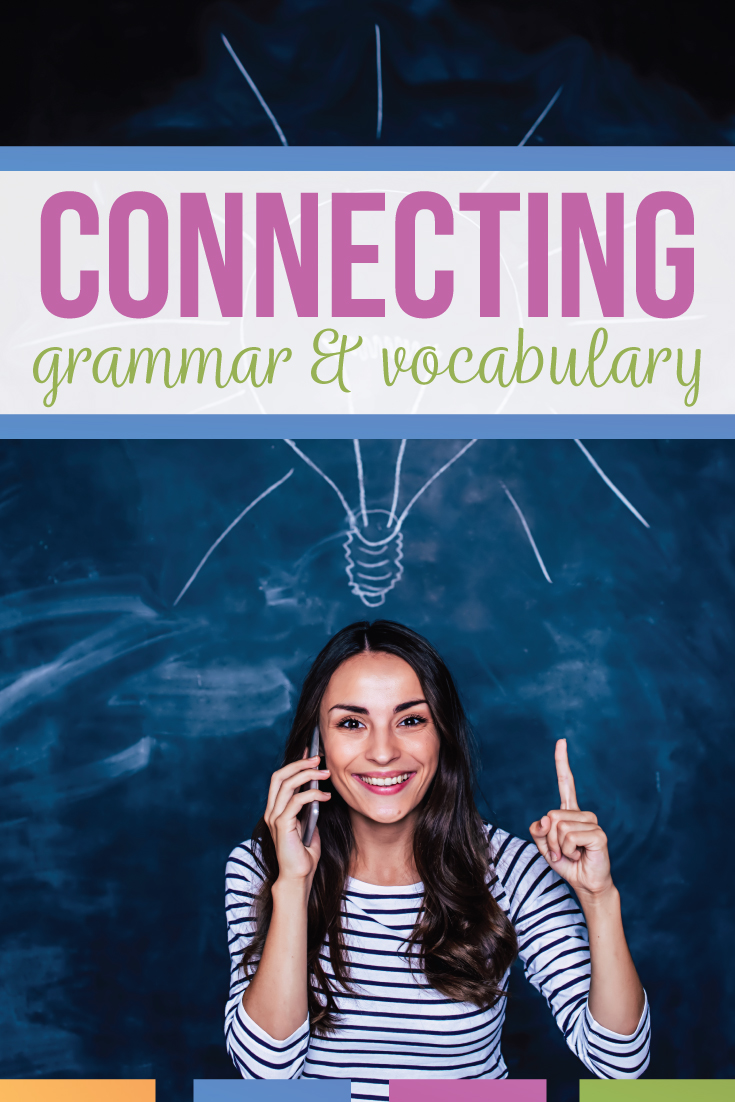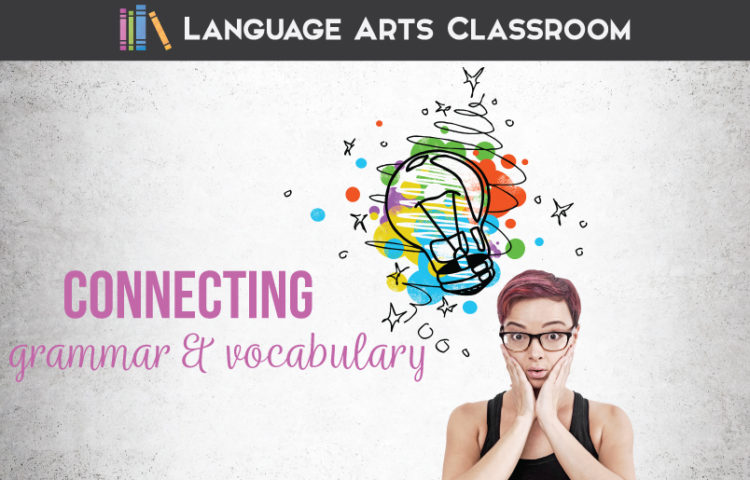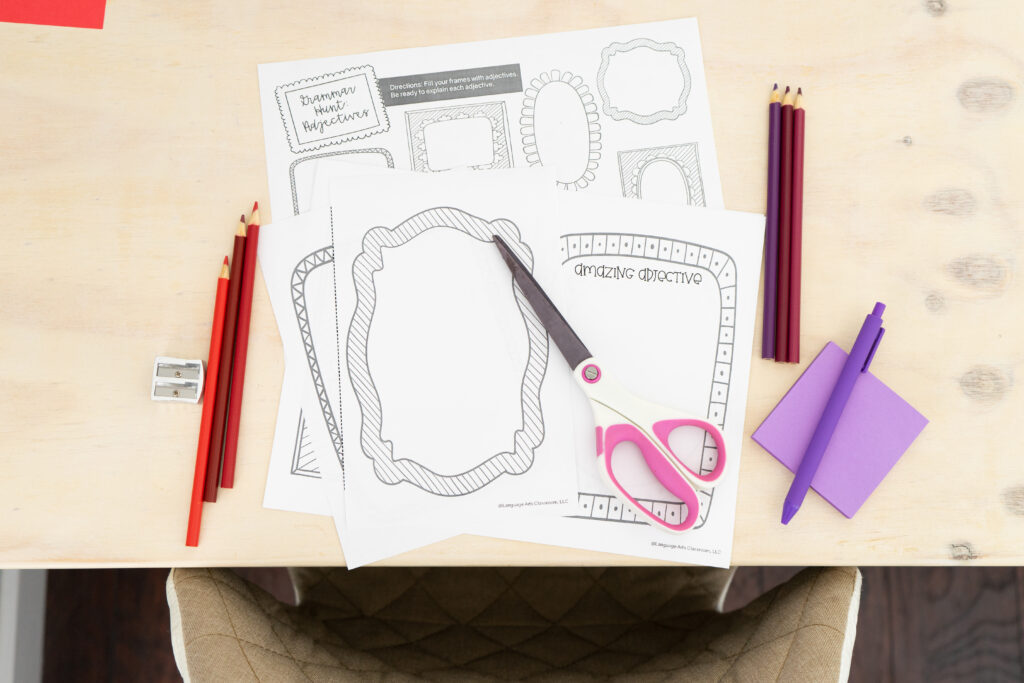‘Connecting Grammar and Vocabulary’ is part seven of a ten-part series covering grammar in middle school and high school English classes. Start with part one and follow the links to the other articles in the series. This blog post specifically looks at how to teach grammar and vocabulary.
In this series of articles, I’ve hopefully provided easy-to-implement activities and tools for connecting grammar to all of ELA content. Teaching grammar by never connecting it to other content bores me and probably disservices students. I’ve covered ideas for connecting grammar and literature, grammar and writing.
Connecting grammar and vocabulary is a logical next step. I primarily connect grammar to vocabulary through word walls and writing, but I am also cognizant that I must use domain-specific vocabulary to enforce vocabulary and grammar lessons. These methods might seem like simple additions, but through conversations with students, I find these approaches create strong conversations. As I reflect on how to teach grammar and vocabulary, I’ve found the following ideas helpful.

Domain-Specific Language
I mention and apply grammatical terms throughout English lesson plans, intentionally. Sometimes this naturally occurs, but sometimes I still need to think through ways of connecting grammar to all of my content.
Vocabulary and grammar lessons allow me to do that. Take for instance the word “shock.” Shock means to strike or jar with intense surprise, as a verb. Students and I would work through that word with a sample: Dad shocked me with a surprise dinner.
What about using “shock” as a noun? That shock made my draw drop. (You could also add that “shock” is the subject.)
What about a participial phrase? Shocking everyone on the team, Alyce hit a home run. (Mention with this sample that the comma goes after the introductory participial phrase.)
Using domain-specific language for vocabulary and grammar can be a simple, two-minute exercise. Not only will students being writing and creating, but you also will be reviewing definitions. When you consider how to teach grammar and vocabulary, use the proper terms for vocabulary words.
Word Walls
Word walls allow older students to engage with literature while working on vocabulary and grammar.
Sample text of vocabulary and grammar:
When I once taught To Kill A Mockingbird, I cover the wall with vocabulary that we can switch around and discuss. Here are some ideas for use.
- Separate vocabulary words by parts of speech: nouns, verbs, adjectives, and adverbs. Then, look at what words look like. While reviewing literature or during extra class time, we would review the meaning of the words, but also cover what makes each word a specific part of speech. Then we would switch the word around, making a noun, a verb, etc. We would purposefully relate to the word wall to review as well, using the vocabulary words again. Not only does this help students understand the words, but they can also understand how words function in sentences. For instance, nouns have specific jobs and when students see a word in the subject position (for example), they can start to think of the word as a noun.
- We determined the meaning not only with context clues, but also with the part of speech. Look:
- Jem’s free dispensation of my pledge irked me, but precious noontime minutes were ticking away.
This is from To Kill A Mockingbird, after Scout beats up Walter Cunningham. “Dispensation” is a vocabulary word. Now, most of my students know what “dispense” means. Beverage machines dispense drinks, and straw containers dispense straws. I connected that prior knowledge to “dispensation,” and then asked what a word with ‘tion’ was. They know this word is a noun, so I could lead them to understanding that “dispensation” is an act of giving out or distributing. They all laughed that soda machines practice “dispensation.”
- Jem’s free dispensation of my pledge irked me, but precious noontime minutes were ticking away.
- Reference the words wall reading. Encourage students to consult the word wall as they read. Many times, words are in a story more than once. Vocabulary words can help students understand their reading.
Word walls are easy for students to create. I consult the words with students as we continue reading. The layered approach brings deeper meaning as I approach how to teach grammar and vocabulary.
Writing
I create vocabulary lists from a variety of places. Sometimes I pull words from stories, and other times I use pre-made vocabulary lists. We complete writing activities with vocabulary lists. The writing forces students to put the words in context. Here are some ways to use vocabulary words through writing:
- We define the words and identify their parts of speech. This may seem simple, but I once didn’t do this with students. Not only do I want students to understand that all words have a part of speech, but I also want them to mentally connect grammar to the dictionary. That life skill will help their writing forever. Students should know how to manipulate words correctly and use the dictionary so they can use words in their writing.
- Connect grammar and vocabulary by making the next connection with writing. Make one sentence an exit ticket for using a vocabulary word in a new way. (Take the “dispensation” example from above.) You can use any grammatical concept, parts of a sentence, verbals, parts of speech. . .
- Rewrite the story in a unique way. A brilliant coworker of mine once used the vocabulary words from “Masque of the Red Death” to rewrite any version of “Cinderella.” The words dealt with similar concepts! As a scaffolded exercise, she would have some students use the words as different parts of speech.
Word walls and writing activities are simple ways to connect grammar and vocabulary. By sharing these ideas, I hope to inspire other teachers to connect grammar and vocabulary. Overall, when I purposefully think of how to teach grammar and vocabulary, I really meet language standards.
I also hope to learn other ways for me to improve vocabulary instruction! So, I turn this over to my blog readers. What are your best tips for how to teach grammar and vocabulary?
Part eight of this series covers how to Make Grammar Fun: a good question for all teachers to ask.




